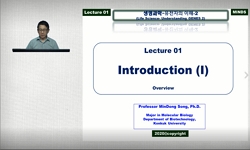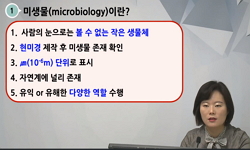Microorganisms can be used in the bioremediation ofheavy metals. It is desirable if the microorganisms show a strongtolerance as well as the ability to accumulate (or biosorb) heavymetals. Yeast is well known for having a high capacity of biosorptiono...
http://chineseinput.net/에서 pinyin(병음)방식으로 중국어를 변환할 수 있습니다.
변환된 중국어를 복사하여 사용하시면 됩니다.
- 中文 을 입력하시려면 zhongwen을 입력하시고 space를누르시면됩니다.
- 北京 을 입력하시려면 beijing을 입력하시고 space를 누르시면 됩니다.



Artificial Induction of Cadmium Tolerance and its Further Enhancement via Heterologous Coexpression of SpHMT1 and AtPCS1 in the Yeast Cells
한글로보기부가정보
다국어 초록 (Multilingual Abstract)
Microorganisms can be used in the bioremediation ofheavy metals. It is desirable if the microorganisms show a strongtolerance as well as the ability to accumulate (or biosorb) heavymetals. Yeast is well known for having a high capacity of biosorptionof heavy metals. Therefore, the present study focused on developinga yeast mutant that has a strong tolerance to cadmium (Cd), arepresentative toxic metal. The Cd-resistant yeast mutant (CdR)was induced and isolated by growing yeast cells in mediacontaining Cd and gradually increasing the concentration untilreaching a possible maximum of 20 mM CdCl2, to which the cellsadapted and survived. CdR cells showed stronger tolerance to Cdinducedstress than the control cells. To obtain even higher Cdtolerance in the yeast cells, both Schizosaccharomyces pombeheavy metal tolerance factor 1 (SpHMT1) and Arabidopsis thalianaphytochelatin synthase (AtPCS1) genes were introduced into theCdR cells to be expressed simultaneously. The transformed CdRcells showed higher Cd tolerance than the untransformed CdRcells.
참고문헌 (Reference)
1 Oritz DF, "Transport of metalbinding peptides by HMT1, a fission yeast ABC-type vacuolar membrane protein" 270 : 4721-4728, 1995
2 Clemens S, "Tolerance to toxic metals by a gene family of phytochelatin synthases from plants and yeast" 18 : 3325-3333, 1999
3 Ruta L, "Removing heavy metals from synthetic effluents using “kamikaze” Saccharomyces cerevisiae cells" 85 : 763-771, 2010
4 Grill E, "Phytochelatins, the heavy-metal-binding peptides of plants, are synthesized from glutathione by a specific ã-glutamylcysteine dipeptidyl transpeptidase (phytochelatin synthase)" 86 : 6838-6842, 1989
5 Rauser WE, "Phytochelatins" 59 : 61-86, 1990
6 Cobbett CS, "Phytochelatin biosynthesis and function in heavy-metal detoxification" 3 : 211-216, 2000
7 이상만, "Phytochelatin Is Not a Primary Factor in Determining Copper Tolerance" 한국식물학회 48 (48): 32-38, 2005
8 Sambrook J, "In Molecular Cloning: A Laboratory Manual" Cold Spring Harbor Laboratory Press 1989
9 이상만, "Heterologous Expression of Fission Yeast Heavy Metal Transporter, SpHMT-1, Confer Tolerance to Cadmium in Cytosolic Phytochelatin-Deficient Saccharomyces cerevisiae" 한국생명과학회 19 (19): 1685-1689, 2009
10 Gad AS, "Heavy metals bio-remediation by immobilized Saccharomyces cerevisiae and Opuntia ficus indica waste" 6 : 79-87, 2010
1 Oritz DF, "Transport of metalbinding peptides by HMT1, a fission yeast ABC-type vacuolar membrane protein" 270 : 4721-4728, 1995
2 Clemens S, "Tolerance to toxic metals by a gene family of phytochelatin synthases from plants and yeast" 18 : 3325-3333, 1999
3 Ruta L, "Removing heavy metals from synthetic effluents using “kamikaze” Saccharomyces cerevisiae cells" 85 : 763-771, 2010
4 Grill E, "Phytochelatins, the heavy-metal-binding peptides of plants, are synthesized from glutathione by a specific ã-glutamylcysteine dipeptidyl transpeptidase (phytochelatin synthase)" 86 : 6838-6842, 1989
5 Rauser WE, "Phytochelatins" 59 : 61-86, 1990
6 Cobbett CS, "Phytochelatin biosynthesis and function in heavy-metal detoxification" 3 : 211-216, 2000
7 이상만, "Phytochelatin Is Not a Primary Factor in Determining Copper Tolerance" 한국식물학회 48 (48): 32-38, 2005
8 Sambrook J, "In Molecular Cloning: A Laboratory Manual" Cold Spring Harbor Laboratory Press 1989
9 이상만, "Heterologous Expression of Fission Yeast Heavy Metal Transporter, SpHMT-1, Confer Tolerance to Cadmium in Cytosolic Phytochelatin-Deficient Saccharomyces cerevisiae" 한국생명과학회 19 (19): 1685-1689, 2009
10 Gad AS, "Heavy metals bio-remediation by immobilized Saccharomyces cerevisiae and Opuntia ficus indica waste" 6 : 79-87, 2010
11 Oritz DF, "Heavy metal tolerance in the fission yeast requires an ATPbinding cassette-type vacuolar membrane transporter" 11 : 3491-3499, 1992
12 Sangman Lee, "Establishment of Tolerance to Both Cadmium and Copper Stress by Expressing Arabidopsis Phytochelatin Synthase in Cu Tolerant Yeast Mutant" 한국응용생명화학회 53 (53): 94-96, 2010
13 Sriprang R, "Enhanced accumulation of Cd2+ by a Mesorhizobium sp. transformed with a gene from Arabidopsis thaliana coding for phytochelatin" 69 : 1791-1796, 2003
14 Giaginis C, "DNA repair systems at targets of cadmium toxicity" 213 : 282-290, 2006
15 Jin YH, "Cadmium is a mutagen that acts by inhibiting mismatch repair" 34 : 326-329, 2003
16 이상만, "Cadmium Tolerance Increased Synergistically by Heterologous Co-expression of SpHMT1 and AtPCS1 in Budding Yeast" 한국응용생명화학회 54 (54): 802-805, 2011
17 Soares EV, "Bioremediation of industrial effluents containing heavy metals using brewing cells of Saccharomyces cerevisiae as a green technology: a review" 19 : 1066-1083, 2012
동일학술지(권/호) 다른 논문
-
Aroma-Active Compounds of Korean Mugwort (Artemisia princeps orientalis)
- 한국응용생명화학회
- 최지영
- 2014
- KCI등재,SCIE,SCOPUS
-
Expression of UNC93A Induced by CpG-DNAliposome Complex in Mice
- 한국응용생명화학회
- 김태하
- 2014
- KCI등재,SCIE,SCOPUS
-
- 한국응용생명화학회
- Ramalingam Radhakrishnan
- 2014
- KCI등재,SCIE,SCOPUS
-
In vitro Metabolism of Flucetosulfuron by Artificial Gastrointestinal Juices
- 한국응용생명화학회
- 이영상
- 2014
- KCI등재,SCIE,SCOPUS
분석정보
인용정보 인용지수 설명보기
학술지 이력
| 연월일 | 이력구분 | 이력상세 | 등재구분 |
|---|---|---|---|
| 2023 | 평가예정 | 해외DB학술지평가 신청대상 (해외등재 학술지 평가) | |
| 2020-01-01 | 평가 | 등재학술지 유지 (해외등재 학술지 평가) |  |
| 2015-12-30 | 학술지명변경 | 한글명 : Journal of the Korean Society for Applied Biological Chemistry -> Applied Biological Chemistry외국어명 : Journal of the Korean Society for Applied Biological Chemistry -> Applied Biological Chemistry |  |
| 2010-05-06 | 학술지명변경 | 한글명 : 한국응용생명화학회지 -> Journal of the Korean Society for Applied Biological Chemistry |  |
| 2010-01-01 | 평가 | 등재학술지 유지 (등재유지) |  |
| 2008-01-01 | 평가 | 등재학술지 유지 (등재유지) |  |
| 2006-01-01 | 평가 | 등재학술지 유지 (등재유지) |  |
| 2004-01-01 | 평가 | 등재학술지 유지 (등재유지) |  |
| 2001-07-01 | 평가 | 등재학술지 선정 (등재후보2차) |  |
| 1999-01-01 | 평가 | 등재후보학술지 선정 (신규평가) |  |
학술지 인용정보
| 기준연도 | WOS-KCI 통합IF(2년) | KCIF(2년) | KCIF(3년) |
|---|---|---|---|
| 2016 | 0.81 | 0.21 | 0.61 |
| KCIF(4년) | KCIF(5년) | 중심성지수(3년) | 즉시성지수 |
| 0.49 | 0.43 | 0.422 | 0.06 |




 KCI
KCI



